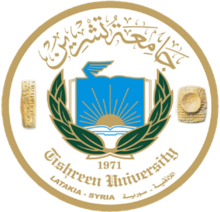اشترك بالحزمة الذهبية واحصل على وصول غير محدود شمرا أكاديميا
تسجيل مستخدم جديدReconstructing Horndeski models from the effective field theory of dark energy
309
0
0.0
(
0
)
اسأل ChatGPT حول البحث

ﻻ يوجد ملخص باللغة العربية
Studying the effects of dark energy and modified gravity on cosmological scales has led to a great number of physical models being developed. The effective field theory (EFT) of cosmic acceleration allows an efficient exploration of this large model space, usually carried out on a phenomenological basis. However, constraints on such parametrized EFT coefficients cannot be trivially connected to fundamental covariant theories. In this paper we reconstruct the class of covariant Horndeski scalar-tensor theories that reproduce the same background dynamics and linear perturbations as a given EFT action. One can use this reconstruction to interpret constraints on parametrized EFT coefficients in terms of viable covariant Horndeski theories. We demonstrate this method with a number of well-known models and discuss a range of future applications.
قيم البحث
اقرأ أيضاً
The effective field theory (EFT) of cosmological perturbations is a useful framework to deal with the low-energy degrees of freedom present for inflation and dark energy. We review the EFT for modified gravitational theories by starting from the most
general action in unitary gauge that involves the lapse function and the three-dimensional geometric scalar quantities appearing in the Arnowitt-Deser-Misner (ADM) formalism. Expanding the action up to quadratic order in the perturbations and imposing conditions for the elimination of spatial derivatives higher than second order, we obtain the Lagrangian of curvature perturbations and gravitational waves with a single scalar degree of freedom. The resulting second-order Lagrangian is exploited for computing the scalar and tensor power spectra generated during inflation. We also show that the most general scalar-tensor theory with second-order equations of motion-Horndeski theory-belongs to the action of our general EFT framework and that the background equations of motion in Horndeski theory can be conveniently expressed in terms of three EFT parameters. Finally we study the equations of matter density perturbations and the effective gravitational coupling for dark energy models based on Horndeski theory, to confront the models with the observations of large-scale structures and weak lensing.
We investigate the structure formation in the effective field theory of the holographic dark energy. The equation of motion for the energy contrast $delta_m$ of the cold dark matter is the same as the one in the general relativity up to the leading o
rder in the small scale limit $kgg aH$, provided the equation of state is Quintessence-like. Our effective field theory breaks down while the equation of state becomes phantom-like. We propose a solution to this problem by eliminating the scalar graviton.
We summarise the effective field theory of dark energy construction to explore observable predictions of linear Horndeski theories. Based on cite{Perenon:2016blf}, we review the diagnostic of these theories on the correlation of the large-scale struc
ture phenomenological functions: the effective Newton constant, the light deflection parameter and the growth function of matter perturbations. We take this opportunity to discuss the evolution of the bounds the propagation speed of gravitational waves has undergone and use the most restrictive one to update the diagnostic.
In light of the cosmological observations, we investigate dark energy models from the Horndeski theory of gravity. In particular, we consider cosmological models with the derivative self-interaction of the scalar field and the derivative coupling bet
ween the scalar field and gravity. We choose the self-interaction term to have an exponential function of the scalar field with both positive and negative exponents. For the function that has a positive exponent, our result shows that the derivative self-interaction term plays an important role in the late-time universe. On the other hand, to reproduce the right cosmic history, the derivative coupling between the scalar field and gravity must dominate during the radiation-dominated phase. However, the importance of such a coupling in the present universe found to be negligible due to its drastic decrease over time. Moreover, the propagation speed of gravitational waves estimated for our model is within the observational bounds, and our model satisfies the observational constraints on the dark energy equation of state.
We analyze the polarization content of gravitational waves in Horndeski theory. Besides the familiar plus and cross polarizations in Einsteins General Relativity, there is one more polarization state which is the mixture of the transverse breathing a
nd longitudinal polarizations.The additional mode is excited by the massive scalar field. In the massless limit, the longitudinal polarization disappears, while the breathing one persists. The upper bound on the graviton mass severely constrains the amplitude of the longitudinal polarization, which makes its detection highly unlikely by the ground-based or space-borne interferometers in the near future. However, pulsar timing arrays might be able to detect the polarization excited by the massive scalar field. Since additional polarization states appear in alternative theories of gravity, the measurement of the polarizations of gravitational waves can be used to probe the nature of gravity. In addition to the plus and cross states, the detection of the breathing polarization means that gravitation is mediated by massless spin 2 and spin 0 fields, and the detection of both the breathing and longitudinal states means that gravitation is propagated by the massless spin 2 and massive spin 0 fields.
سجل دخول لتتمكن من نشر تعليقات
التعليقات
جاري جلب التعليقات


سجل دخول لتتمكن من متابعة معايير البحث التي قمت باختيارها


